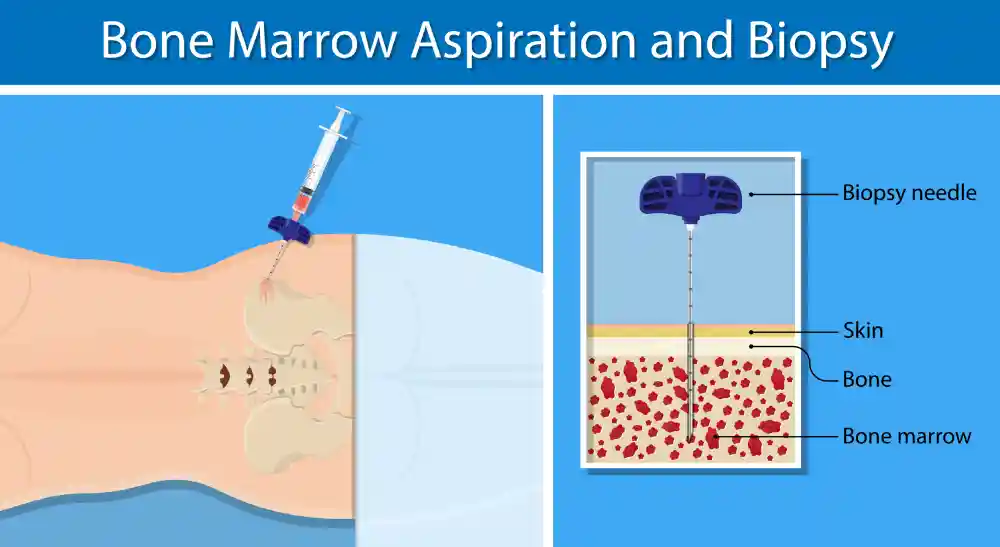4) Bone marrow aspiration and biopsy

Myelofibrosis literally means fibrosis of the bone marrow, and to confirm the diagnosis, a bone marrow aspiration or a biopsy is required. The procedure involves sampling a piece of the bone marrow or aspirating it using special needles going through the iliac crest, that is the upper part of your hip bone. The procedure is done under local anesthesia and is generally considered safe.
The main difference between bone marrow aspiration and biopsy is the technique. Bone marrow aspiration relies of the liquidity of the bone marrow to aspirate a number of cells and examine under the microscope while bone marrow biopsy samples a piece of the bone and the underlying marrow, and is especially useful when the bone marrow has fewer cells as is the case in late myelofibrosis. Trying to aspirate in such cases can produce what is called a “dry tap”.
Bone marrow biopsy examination under the microscope shows increased number of mother cells especially those of the platelets as well as significant fibrous tissue and blood vessels. The presence of this triad is a sure sign of myelofibrosis. Genetic tests may be carried out on the specimen since some chromosomal abnormalities can indicate the outcome, but that is not the rule for diagnosis.
